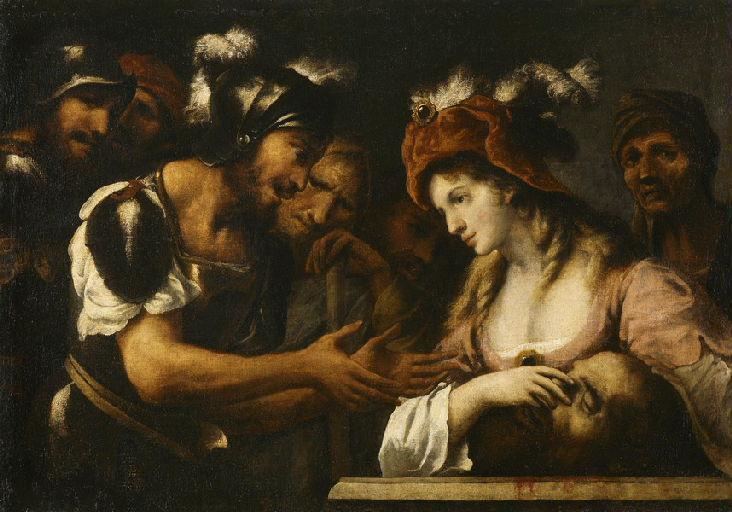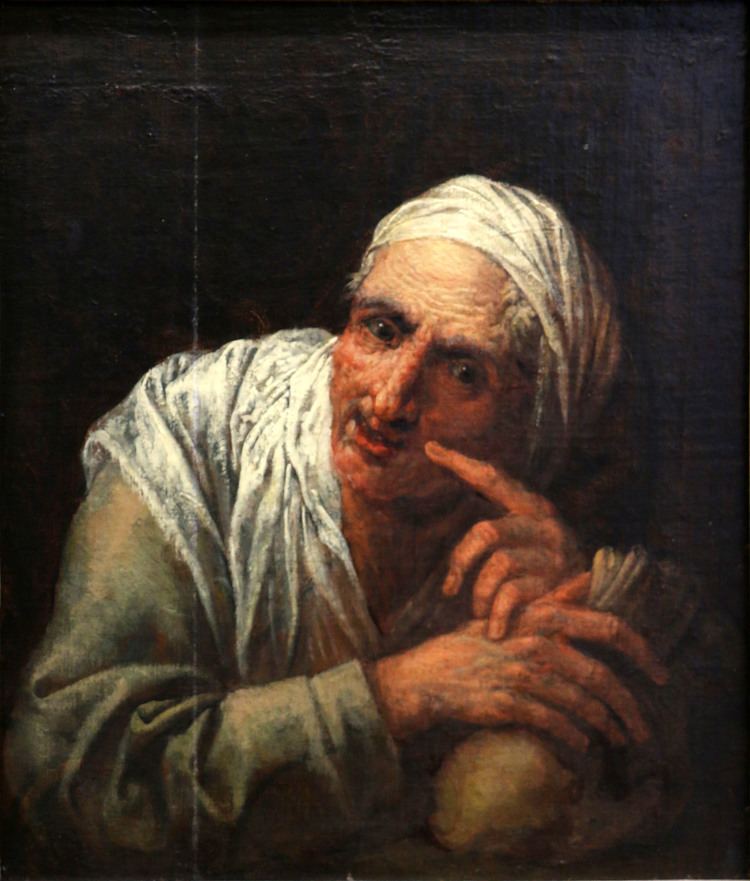Name Pietro Vecchia | Period Baroque | |
 | ||
Died September 8, 1678, Venice, Italy | ||
Pietro della Vecchia, formerly incorrectly called Pietro Muttoni, (1603 – 8 September 1678) was an Italian painter known for his altar pieces.
Contents
Biography

Pietro della Vecchia is believed to have been born in Vicenza or in Venice. His early work display a strong influence by the work of Carlo Saraceni and his student and collaborator Jean Leclerc. It is likely that della Vecchia trained with them. He may have spent some time in Rome after Leclerc had left Venice as is visible in the Caravaggesque influence in his work.. Alessandro Varotari, called il Padovanino, was also an influence and is described by some sources as his teacher but this influence is only noticeable in works from after 1635. Della Vecchia probably worked in Padovanino's studio c. 1625-6, after his trip to Rome, and from the latter he derived his great interest in 16th-century painting in Venice and the Veneto.

He married Clorinda Renieri, daughter of Nicolas Régnier, a Flemish painter and art dealer. Della Vecchia died in Venice on 6 September 1678.

Until 1984, the artist was mistakenly referred to as Pietro Muttoni. This misnomer is attributed to Italian art historian and archaeologist, Luigi Lanzi who in his Storia pittorica della Italia confused the name of the artist with the name of a collection, Muttoni, in which he had seen one of his paintings. In fact, Pietro was from the well known Venetian family of della Vecchia.
Work

He had a notable interest in Venetian masters such as Titian and Giorgione. Known among his contemporaries for his ability to imitate the styles of 16th-century masters, he was also known for his grotesque paintings and portraiture. His earliest known works include two representations of St Francis, which have survived in many versions (e.g. Galleria Estense, Modena; Accademia Concordi, Rovigo), and a Crucifixion (1633; San Lio, Venice).
His monumental Crucifixion (1637; Fondazione Cini, Venice) has a composition that harks back to the mannerist works of the 16th century, while the figures derive from Caravaggio, is characteristic of this phase in his style. By 1640, the influence of Bernardo Strozzi is apparent in the Angel Offering a Skull to St Giustina, who stands between St Joseph and St John (1640; Accademia, Venice) painted for the church of San Giustina. From 1640 to 1673 he painted designs for some the mosaic depictions inside the St. Mark's Basilica. He painted four idyllic landscapes that presage Rococo style (now in Pinacoteca Querini-Stampalia).
